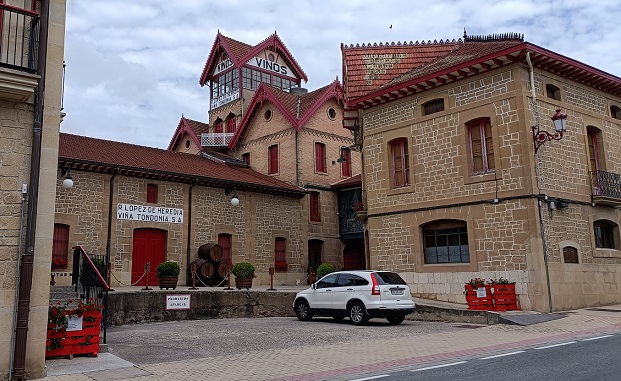
There are more than 200 wineries open to the public in Spain’s principal winemaking region. But I would make my wine in the Haro Station District. I love the history of the area – how it marks the changeover from horse-drawn transport to railways; how the railways brought French wine-producers to Rioja to supplement their own harvests, which had been decimated by phylloxera.
It's like stepping back in time here. This area is home to the highest concentration of centuries-old wineries in the world: R. López de Heredia Viña Tondonia (above, founded 1877); the Compañía Vinícola del Norte de España (CVNE, 1879); A. y J. Gómez Cruzado (1886); La Rioja Alta (1890); and Bodegas Bilbaínas (1901). The ‘modern’ wineries include Muga (founded in 1932 but settled here in 1970) and RODA, which moved here in 1987.
I like the atmosphere, too, and the way the wineries collaborate to promote the wines from the ‘Bodegas del Barrio de la Estación’ with events such as ‘La Cata del Barrio de la Estación’.
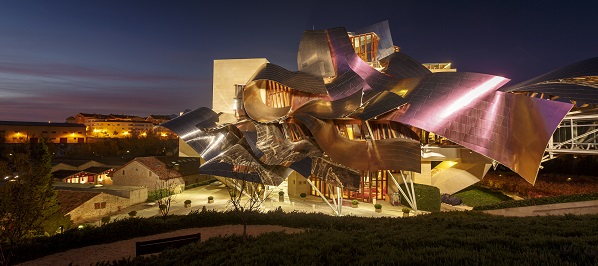
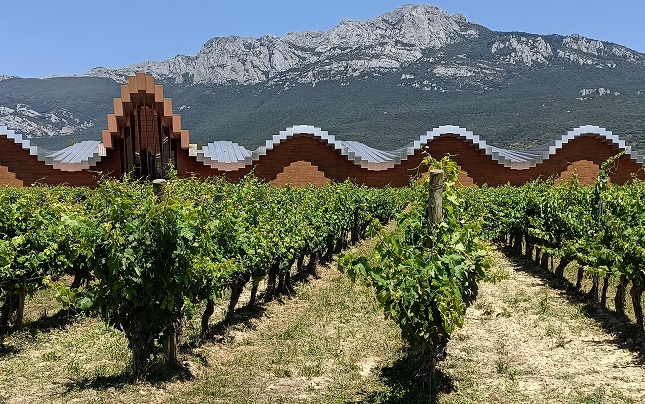
This seems an important question in Rioja – what would the roof look like? Would the winery have a fancy roof like Marqués de Riscal in Elciego (top) or Ysios in Laguardia (above)?
They are impressive, I admit. And they tell a story.
The twisted metal ribbons swathed over Bodegas de los Herederos del Marqués de Riscal reflect the company and the soil that produces its wines: the red tones are redolent of its red wines, the golden tones represent the signature wire mesh that is wrapped around each of its bottles and the silver tones reflect the capsule that covers the cork.
The roof of Bodegas Ysios simulates the silhouette of a duck in flight and merges with the stunning backdrop of the Sierra de Cantabria in lofty Rioja Alavesa.
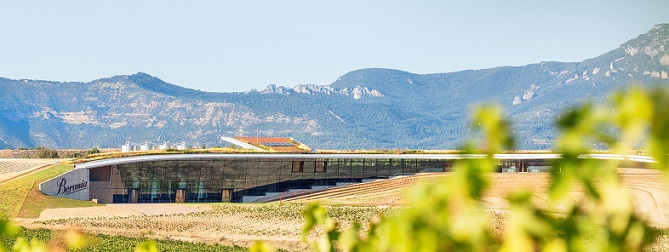
But I think my favourite roof is that of Bodegas Beronia (above and main photo), part of the family-owned González Byass group. As you can see, the main part of the winery is built into the ground, taking advantage of the natural terracing that exists between the estate’s upper and lower vineyard. The roof helps it to integrate into the Rioja landscape thanks to its green roof gardens, consisting of native plants which require little maintenance or water to survive.
The roof is practical too: it allows rainwater to be recovered for irrigation, is resilient, disguises the presence of the building, and helps to keep the winery cool in summer.
For further details of Bodegas Beronia’s sustainable practices, click here.
What would the interior of the winery look like?
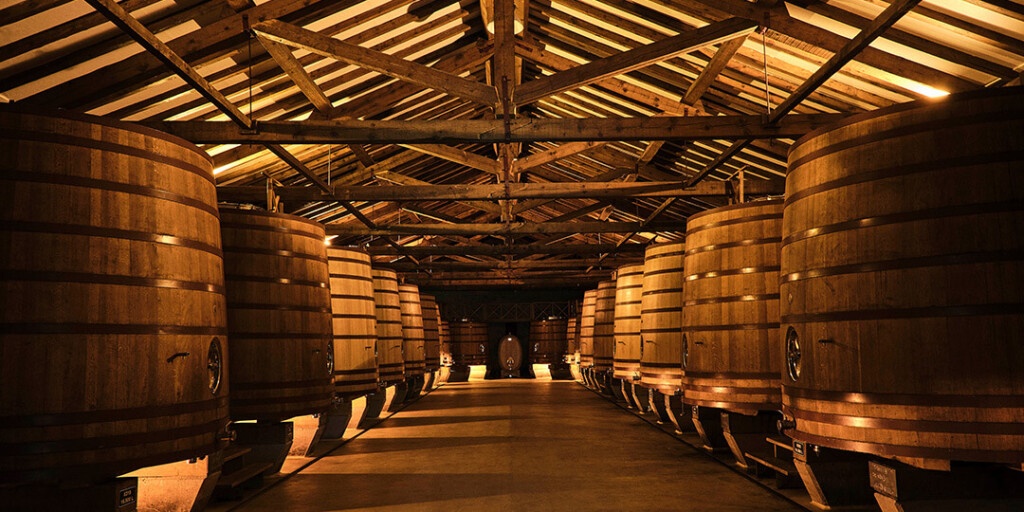

It would take elements from these two impressive cellars: Compañía Vinícola del Norte de España (CVNE, top) and sister winery Viña Real (above). A mix of traditonal and modern.
What about the grape varieties?
I would like to harvest all five of the red varieties allowed in DOCa Rioja – Tempranillo, Garnacha, Graciano, Mazuelo and Maturana – from vines that are more than 100 years old.
It’s interesting to remember that there was more Garnacha than Tempranillo up until the 1980s, so I would be tempted to revert to the classic Rioja blend of Tempranillo, Graciano and Mazuelo for reds meant for ageing, and Tempranillo and Garnacha for young reds.
What would you do that’s special in the vineyards?
I’m intrigued by one technique used at Ysios. They remove leaves early (at the beginning of the flowering process, during fruit set) to cause the premature death of some berries – resulting in looser and, therefore, healthier bunches.
What about with the vinifications?
I like the way they deal with MLF at Bodegas Roda, a 19th century winery in the Barrio de la Estación de Haro. 1,000 French oak barrels in a room with underground heating. When the malolactic conversion is complete, the stained-glass windows on the building’s north façade are opened, allowing the cold winter air to pass through – naturally stabilising the wines.
I also like the racking by candlelight that I witnessed at La Rioja Alta. It’s a lovely tradition. Every six months the wine is racked from one American oak barrel to another and the turbidity is checked by holding a tumbler of wine against the light from a flickering candle. It’s effective and Insta-friendly.
Now the big question – would you use American or French oak barrels?
I can see the benefits of both and would use both for complexity. At Bodegas Beronia’s new winery, half the barrels are mixed oak, 10% are American, and 40% are French. In the mixed barrels, the staves are made of American oak and the heads are French – meaning about 33% of the wine is in contact with French oak, which gives complexity and roundness. These barrels are used for Beronia’s crianza and reservas. The pure French oak barrels are used for the gran reservas while the American barrels are used for a barrel-fermented Tempranillo.
I’m also a fan of their barrel-cleaning machine (below). The Cleanwood technology “regenerates barrels” in four minutes using high-frequency microwaves to extract the remnants of wine left inside the wood during ageing. Victoria González-Gordon López de Carrizosa tells me they are pleased with the results. She explains: “This system helps preserve barrels for longer and helps save water and energy. Results for barrel regeneration are good – we are increasing the barrel age at least two years, might be more, let’s see, so also a sustainability point.”
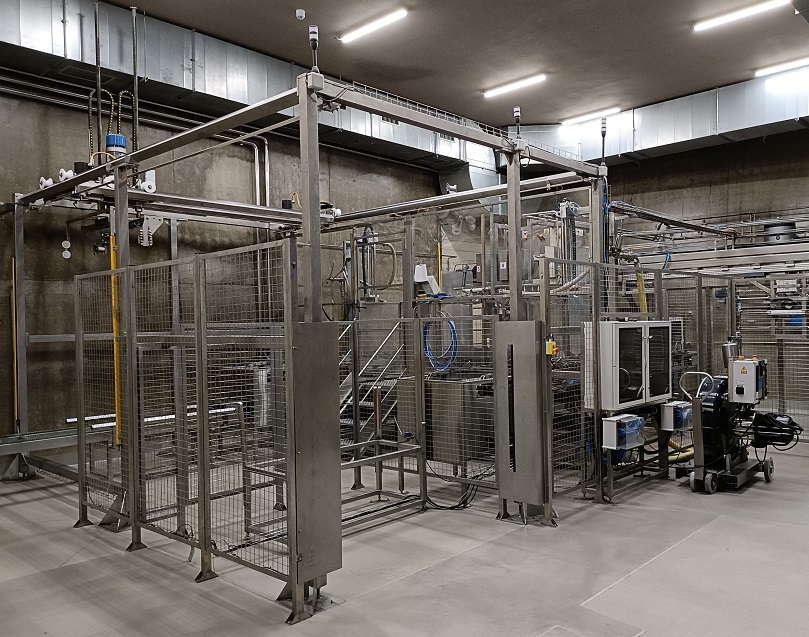
Would it be crianza or reserva or gran reserva?
Cosecha.
Really?
Yes, cosecha – generic. I like the approach of Ysios winemaker Clara Canals. She is happy to downgrade her wines from crianza to cosecha to give her more freedom in the winemaking process. It enables her to put wines in concrete eggs or large-format oak barrels such as foudres “to preserve a bit more the fruit”. It also enables her to make single-vineyard wines that show the plot’s unique terroir.
As we strolled through the barrel room at Ysios (below), she told me: “Some consumers still think the gran reservas are better than other wines, but nowadays in Rioja, many smaller wineries have moved away from that strict ageing regime (introduced in 1979).
“Consumers understand gran reserva is more like an alpha wine whereas cosecha is more like a young wine. But our consumers really understand what’s behind our decision.”
However, she thinks such wines are part of modern Rioja, which markets itself on ‘100km of Diversity’.
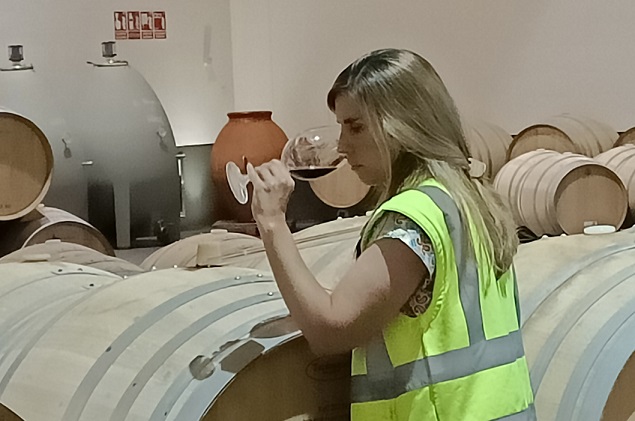
What shape bottle would you use?
I like the story behind Vivanco’s bottle (below), patented in 2004.
It’s inspired by an early 19th century bottle made in France. This bottle, on exhibit at the Vivanco Museum of the Culture of Wine, went down in history as one of the last models made using the traditional blowing technique. From then on, bottles were produced employing industrial methods.

How would you sell your wine?
I’d set up my own wine club, like the La Rioja Alta Club de Cosecheros, which makes three exclusive reserve wines for club members. The club, started in 1976, is believed to be the first wine club in Spain. The wines are from vineyards in Rioja Alta, Rioja Alavesa and Ribera del Duero. Membership enables wine lovers to keep their wines in a special room and enjoy their wine with food in the private spaces in the cellar.
What ideas for wine tourism did you pick up in Rioja?
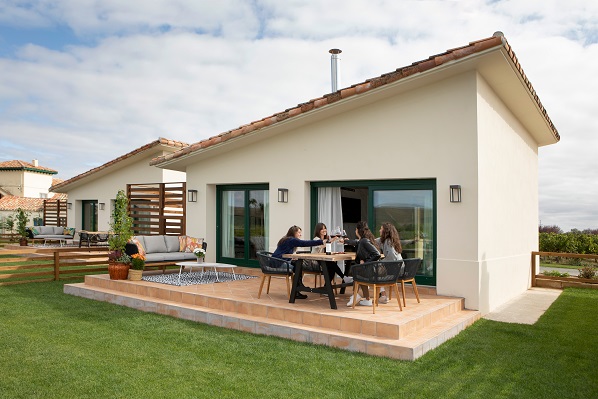
Since 2016, Finca La Emperatriz in Baños de Rioja, Rioja Alta, has opened its doors to visitors who wish to learn about this historic estate, once owned by the Empress of France, Eugenia de Montijo, and discover the wines of brothers Eduardo and Víctor Hernáiz.
For guests who wish to stay overnight near the vineyards, overlooking the Cantabria and Demanda mountain ranges, there are three villas – tastefully converted buildings that once housed the foremen and estate’s workers. In 2020, these buildings, which preserve the authenticity and character of popular Rioja architecture from the 1960s, underwent meticulous restoration work to give visitors, wine tourists and travellers a perfect place for rest and disconnection.
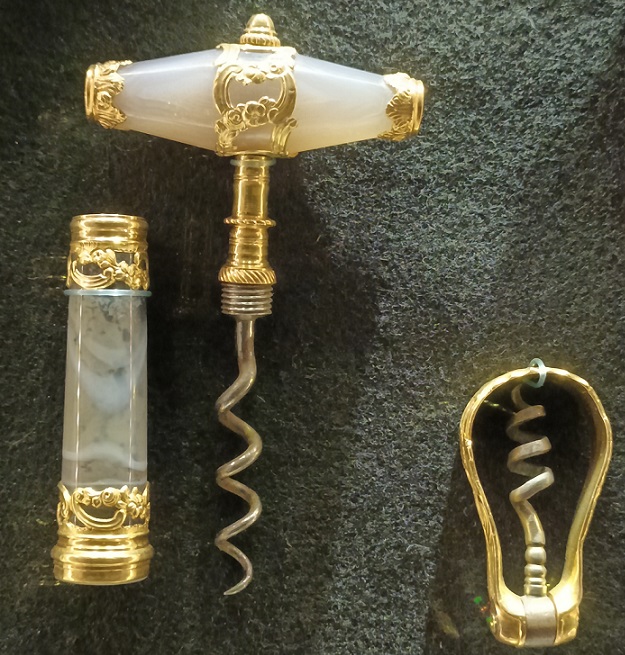
For quirky experiences, I was fascinated by the Vivanco Museum of Wine Culture in Briones, Rioja Alta. I think it’s the best museum devoted to wine culture. The museum covers an area of 4,000sq m and comprises five permanent exhibition halls, a temporary exhibition hall and, in the grounds, the Bacchus Garden, a collection of more than 220 grape varieties from around the world. The museum has more than 20,000 exhibits, including 3,000 corkscrews and wine-related art by famous painters, such as Picasso.
Bodegas Franco-Españolas, a five-minute walk from downtown Logroño, stages a few interesting events. In the summer it transforms one of the winery’s lawns into an impromptu outdoor event: el Cine de Verano – Descaradamente Clásico (Summer Cinema). Every Thursday in July, movie lovers gather to watch original language films with Spanish subtitles. As a first act, attendees are treated to live music with tapas and glasses of Rioja from the winery.
The winery is also co-producer and host of two major festivals: MUWI La Rioja Music Fest – an annual event that fuses music, Rioja wine and tourism – in August and ACTUAL Festival in January.
The winery also hosts Teatro con Diamante (Theatre with Diamante), a one-act play competition each May. Five spaces inside the winery are transformed into stages. There, theatre companies perform short plays for 15 minutes, after which spectators vote to choose the winning performance. In 2022, more than 500 theatre lovers attended the ninth edition of Teatro con Diamante.

 English
English French
French







.png)


